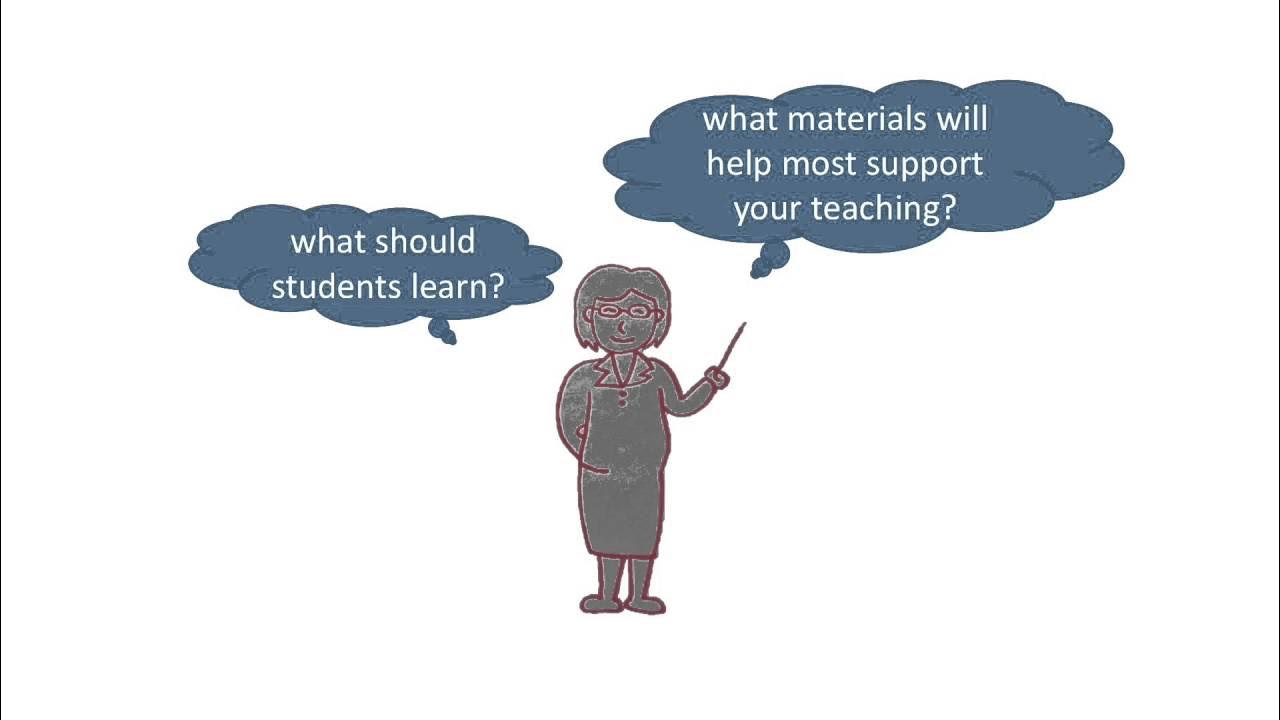3 Merumuskan Tujuan Pembelajaran final
Summary
TLDRThis script discusses the process of setting learning objectives in educational planning. It emphasizes translating learning achievements into operational and concrete goals. Educators should consider the characteristics of the subject, the concepts being taught, and the learning environment. The learning objectives should include competencies and the scope of the material. Teachers can use theories like revised Bloom's Taxonomy, Understanding by Design, or Marzano's knowledge systems to formulate these objectives. Three methods are suggested: directly from the curriculum, analyzing competencies and material scope, or across elements of the curriculum. The script encourages educators to adapt or develop their own methods based on the needs of the subject and learners.
Takeaways
- 🎯 Teachers need to break down the learning outcomes (CP) into concrete learning objectives (TP) for better planning.
- 📚 The second step in lesson planning is to formulate clear and operational learning objectives.
- 🎓 Teachers must consider the characteristics of the subject matter, learners, and learning environment when creating objectives.
- 📝 Learning objectives should include two main components: competencies and scope of content.
- 💡 Competencies refer to the skills or abilities students need to demonstrate by the end of a learning unit.
- 🧠 Scope of content relates to the key concepts and knowledge students need to understand by the end of a learning unit.
- 🔍 Teachers can consult learning outcomes (CP) from the previous and following phases to ensure appropriate content depth.
- 📊 There are three suggested methods to formulate learning objectives: directly based on CP, by analyzing competencies and content, or across CP elements.
- 🧑🏫 Various theoretical frameworks, such as Bloom's Taxonomy and Marzano's three systems of knowledge, can guide the development of learning objectives.
- 🔄 Teachers can also use or modify pre-existing objectives provided by the central government to suit their specific learning needs.
Q & A
What is the purpose of breaking down the Capaian Pembelajaran (CP) into Tujuan Pembelajaran (TP)?
-The purpose is to make educational goals more operational and concrete, which helps students achieve learning outcomes by the end of a phase.
What is the second step in the learning planning stage?
-The second step is to formulate learning objectives, which involves designing more operational and concrete goals for learning.
What factors should educators consider when formulating learning objectives?
-Educators should consider the characteristics of the subject matter, the concepts or topics being studied, the characteristics of the learners, and the context of the learning environment.
What are the two main components that learning objectives should ideally include?
-Learning objectives should include competencies, which are the abilities or skills to be demonstrated by learners, and the scope of the material, which refers to the main content and concepts to be understood by the end of a learning unit.
How can educators determine the competencies required by learners?
-Educators can use guiding questions such as 'What abilities should learners demonstrate?' and 'What should learners show without thinking?' to determine competencies.
What is the scope of material in the context of learning objectives?
-The scope of material refers to the content and main concepts that need to be understood by the end of a single learning unit.
How can educators use the previous phase's CP to determine the depth of material content?
-Educators can look at the CP from the previous phase and compare it with the current phase to understand the depth of material content.
What guiding questions can educators use to determine the scope of material?
-Questions such as 'What should learners learn from a large concept stated in the CP?' and 'Can the learners' surroundings and life be used as context for learning the content in the CP?' can guide educators.
What is the difference between learning objectives and daily learning objectives?
-Learning objectives are broader and more general than daily learning objectives, which are specific to each instructional session.
What theoretical approaches can educators use when formulating learning objectives?
-Educators can use approaches such as the revised Taxonomy of Bloom by Anderson and Krathwohl in 2001, the Understanding by Design approach by Wiggins and McTighe in 2005, or Marzano's three systems in the knowledge domain.
What are the three methods educators can use to formulate learning objectives?
-The three methods are: 1) Directly formulating learning objectives based on CP, 2) Formulating learning objectives by analyzing competencies and material scope in CP, and 3) Formulating learning objectives across elements of CP.
Can educators use pre-set learning objectives provided by central government agencies?
-Yes, educators can use or modify pre-set learning objectives provided by central government agencies, adapting them to meet specific needs and learning processes.
Outlines

هذا القسم متوفر فقط للمشتركين. يرجى الترقية للوصول إلى هذه الميزة.
قم بالترقية الآنMindmap

هذا القسم متوفر فقط للمشتركين. يرجى الترقية للوصول إلى هذه الميزة.
قم بالترقية الآنKeywords

هذا القسم متوفر فقط للمشتركين. يرجى الترقية للوصول إلى هذه الميزة.
قم بالترقية الآنHighlights

هذا القسم متوفر فقط للمشتركين. يرجى الترقية للوصول إلى هذه الميزة.
قم بالترقية الآنTranscripts

هذا القسم متوفر فقط للمشتركين. يرجى الترقية للوصول إلى هذه الميزة.
قم بالترقية الآنتصفح المزيد من مقاطع الفيديو ذات الصلة
5.0 / 5 (0 votes)






